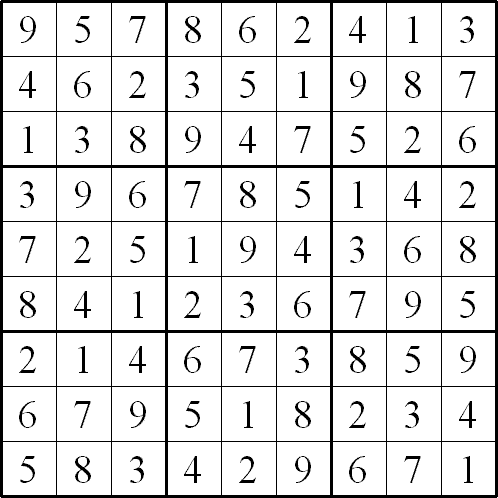Twin equivalent Sudoku
This Sudoku problem consists of a pair of linked standard Sudoku puzzles each with some starting digits.
Problem
By Henry Kwok
| Twin A | Twin B |
Image

| Image
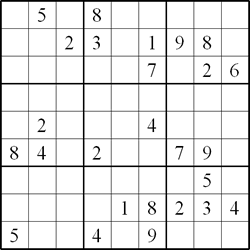
|
There is also a downloadable version of the two Sudoku grids.
Rules of Twin Equivalent Sudoku
This Sudoku consists of a pair of linked standard Sudoku puzzles each with some starting digits. As usual, the object of this Sudoku is to fill in the whole of each 9x9 grid with digits 1 through 9 so that each row, each column and each block contain all the digits 1 through 9.
Twin B is related to twin A in the following ways:
1. Given that twin A is the original puzzle, we can create an equivalent puzzle from twin A by swapping a horizontal/vertical chute or band of 3 blocks with another horizontal/vertical chute or band of 3 blocks.
For example, an equivalent puzzle (fig 2) is created from fig 1 by swapping the left vertical chute of 3 blocks with the middle vertical chute of 3 blocks.
Image
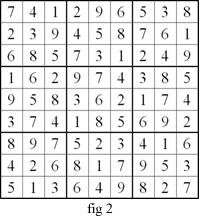
Image
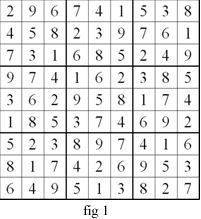
Similarly an equivalent puzzle (fig 3) can be created from fig 1 by swapping the top horizontal chute of 3 blocks with the middle horizontal chute of 3 blocks.
Image
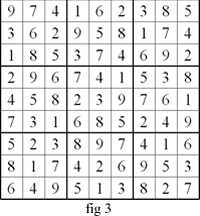
2. After swapping the chutes, we can create a third equivalent puzzle (twin B) by renaming all the elements of second equivalent puzzle.
For example, we create an equivalent puzzle (fig 4) by renaming the elements of fig 3 in the following way:
fig 3 $\rightarrow $ fig 4
$1 \rightarrow7 $
$ 2 \rightarrow 6 $
$ 3\rightarrow 1 $
$4 \rightarrow 9 $
$ 5 \rightarrow 3 $
$6 \rightarrow 2 $
$7 \rightarrow 8 $
$8 \rightarrow 5 $
$9 \rightarrow 4$
Image

The four puzzles (fig 1 to fig 4) are equivalent to one another. Equivalent puzzles can also be created from fig 1 and fig 2 by renaming the elements in the respective grids. Instead of calling fig 1 and fig 4 by the clumsy name of 'twin element-renaming chute-swapping sudoku', we can simply call them 'twin equivalent sudoku'.
Student Solutions
Twin A
Image

Twin B
Image
